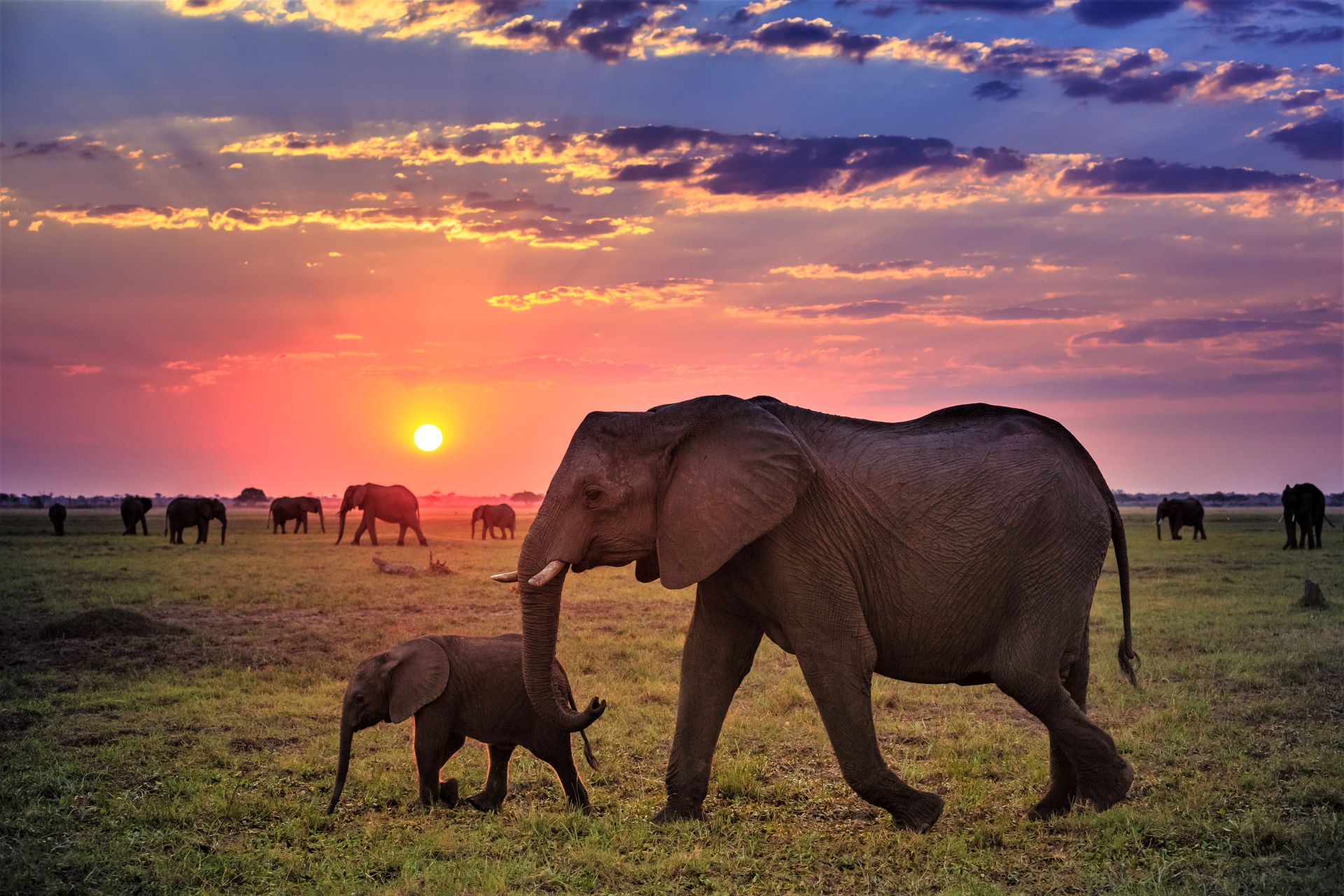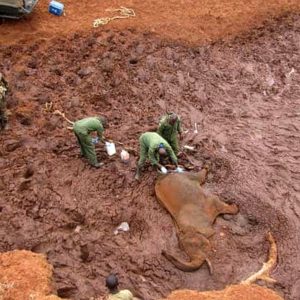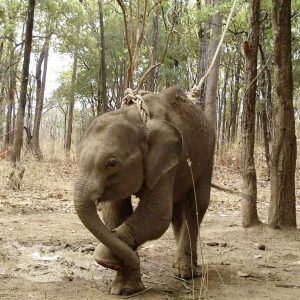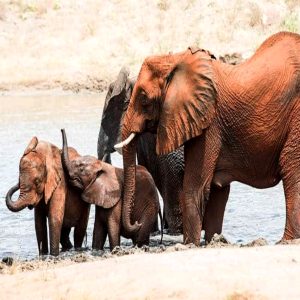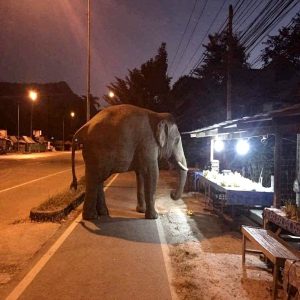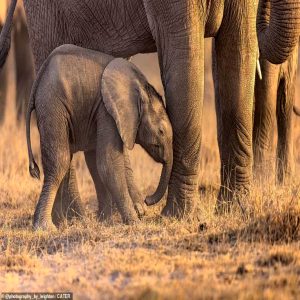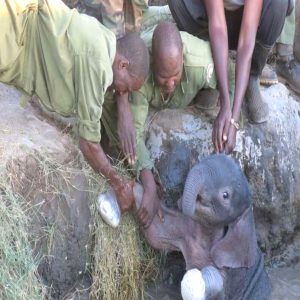Southern Africa is home to some of the world’s most majestic animals, along with the world’s largest transboundary protected region to help conserve wild expanses. In 2011, Angola, Botswana, Namibia, Zambia and Zimbabwe came together to formally recognize a 106-million-acre region in Africa’s Kavango and Zambezi river basins as a protected wildlife area. The convergence point of these five nations is known as the Kavango-Zambezi Transfrontier Conservation Area (KAZA).
Within KAZA, there are 3,000 plant species, 600 bird species and almost half of Africa’s elephants. The African savanna (bush) elephant is the world’s largest land animal. With over 90% of African elephants lost in the past century, this protected area, and the transnational cooperation that sustains it, is a big win for conservationists. The goal of KAZA is to manage the ecosystem peacefully and sustainably to the benefit of wildlife and people.
Elephants in the Beating Heart of Africa
Located at the heart of KAZA is the Okavango Delta, a permanent marshland that is surrounded by the Kalahari Desert. During Botswana’s dry season, roughly 2.5 trillion gallons of rainwater from Angola’s lush highlands spill into this inland river delta, causing this fertile floodplain to double in size. The Okavango Delta becomes an oasis roughly half the size of Massachusetts and will welcome hundreds of thousands of large mammals during its spectacular green season.
The Okavango Delta is Earth’s largest inland water system and became UNESCO’s 1,000th World Heritage Site in 2014. This region has more than 200,000 elephants distributed across Angola, Botswana, Namibia, Zambia and Zimbabwe. Some 18,000 elephants live in Okavango’s eastern panhandle and are part of the largest contiguous population in Africa. The year-round water in the river delta attracts the elephants, making this region critically important to their survival.
The Kalahari Desert provides a reliable and year-round source of grass, which is essential for elephants. The Central Kalahari Game Reserve, located in the center of the 360,000-square-mile Kalahari Desert, is the largest conservation area in Botswana and one of the biggest in the world. The wooded dunes, mature shrubs and trees that line the valley support many endangered species, including white rhinos, southern ground hornbills, cheetahs and African savanna elephants.
Between late October and March, rain showers turn arid landscapes of the Kalahari Desert green, and animals migrate from their winter watering holes to the salt flats of the south. Green vegetation springs to life on the bleached plains of Deception Valley, attracting herds from all over the reserve. These animals feed together, and a large number will give birth during this time. The abundant rain and food allow wildlife to expand their families, and new life appears around every corner.
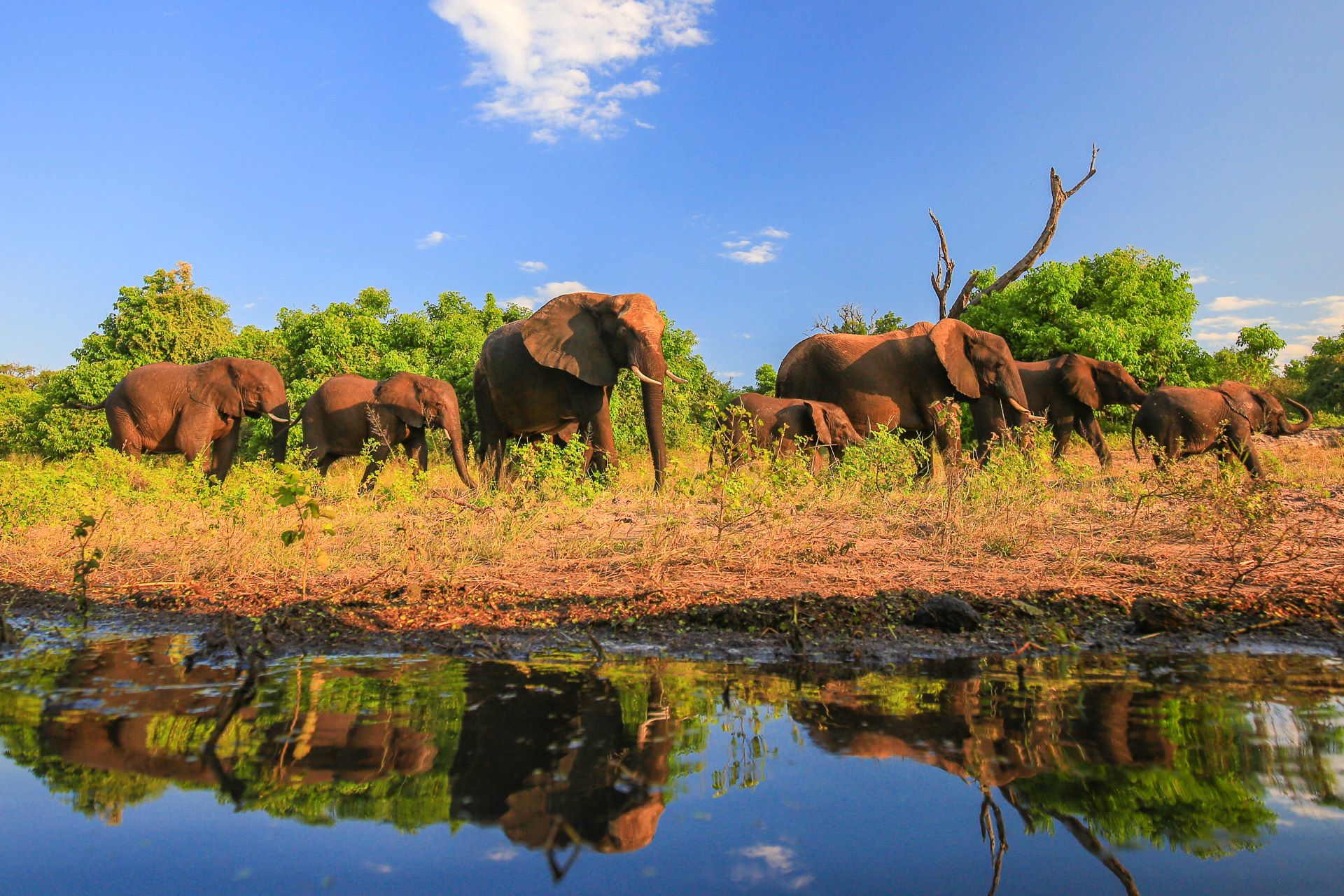
Matriarchal Elephant Herds Support the Cycle of Life
Chobe National Park supports the largest surviving elephant populations in the world—120,000 are dispersed throughout much of northern Botswana, as well as parts of northwestern Zimbabwe. When elephant herds, which usually consist of five or six related animals, traverse Chobe National Park in search of food or water, they are led by a female elephant, or matriarch. Daughters of the matriarch typically stay with the herd for most, if not all, of their lives but bulls tend to stay with their family units only until they reach puberty. Older elephants provide the family unit with an important historical memory of watering holes, or the location of seasonally available fruits.
Female elephants carry their young for 20 to 22 months, the longest period of all mammals. When born, African elephant calves weigh around 220 pounds and have thin, curly black hair on their foreheads. Most babies are born during the night when it is harder for predators to find them. Twenty minutes after being born, elephant calves can stand, and they will start to walk within one hour. After two days, they can keep up with the herd!
Unlike baby Asian elephants that start drinking their mother’s milk at around three days old, baby African elephants start drinking their mother’s milk about one hour after being born. Young calves will suckle for a period of up to five years, reaching from the side for its mother’s teat just behind her front leg. Since they are born nearly blind, they rely on their mother’s touch, sound and smell and other females in the herd to guide them. By the time they are about seven or eight months old, they will start to eat solid food. Adult African savanna elephants can eat over 300 pounds of plants and shrubs in a day, and their high mobility allows them to find food in habitats that are often thousands of miles from home.

Many of the animals that live in Botswana give birth during the green season, and it’s not uncommon to see mothers and their offspring on daily safari treks. Botswana’s green season is one of the few locations on Earth where you can see such an abundance of new wildlife, and Natural Habitat Adventures’ Botswana: Kalahari, the Delta & Beyond safari has dozens of opportunities for dynamic wildlife observation.
The ultimate southern summer safari begins at Mosi-oa-Tunya National Park, where a wildlife drive chaperoned by local guides and park rangers leads travelers to see white rhinoceroses and the elephants that regularly wander throughout the park. The Chobe River, located where Botswana, Zambia, Zimbabwe and Namibia meet, is an ecologically diverse area that sustains large populations of elephants, hippos, crocodiles and more. Boating tours in Chobe National Park often lead to elephant sightings in the hundreds.
An intimate stay at the private Jao Concession, located at the center of the Okavango Delta, provides open access to an area marked by palm-studded islands, riverine forest and sprawling floodplains. Our secluded camp is set within a productive wetland that nurtures prolific wildlife. Guided walks and 4×4 drives provide thrilling proximity to majestic African wildlife. A helicopter flight over the Gomoti River and Okavango Delta offers a coveted aerial perspective of wildlife on the move.
Elephants don’t see lines on a map, so ensuring that they and other animals can move freely across borders is key to the success of KAZA. Exploring KAZA and Botswana with Natural Habitat Adventures provides rare moments and close encounters with spectacular species like the African elephant.
